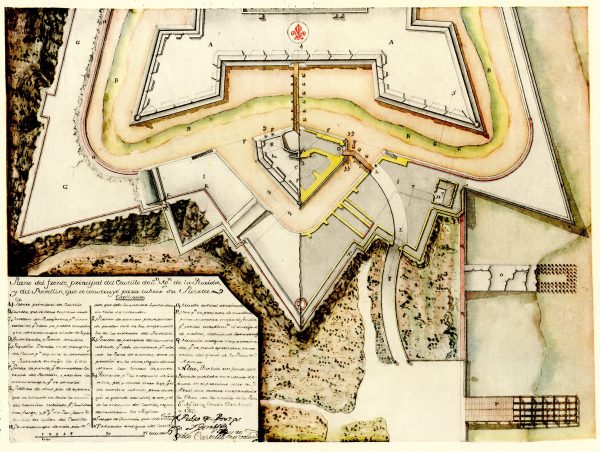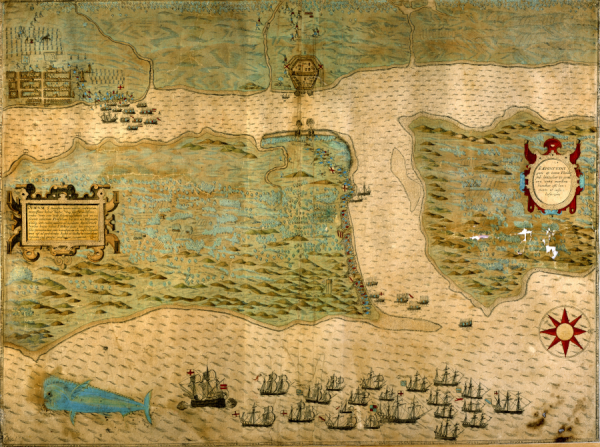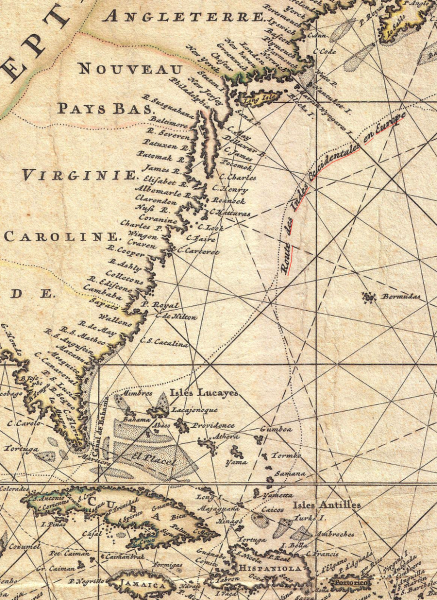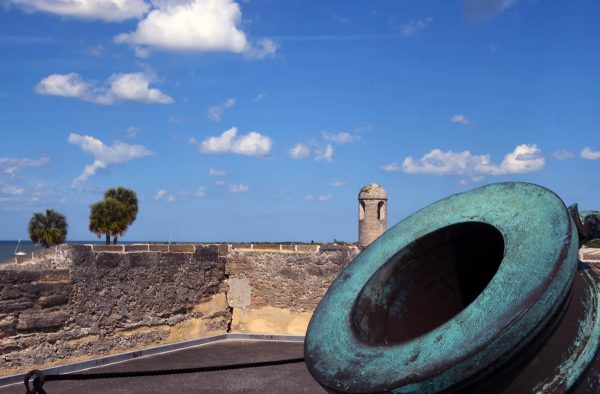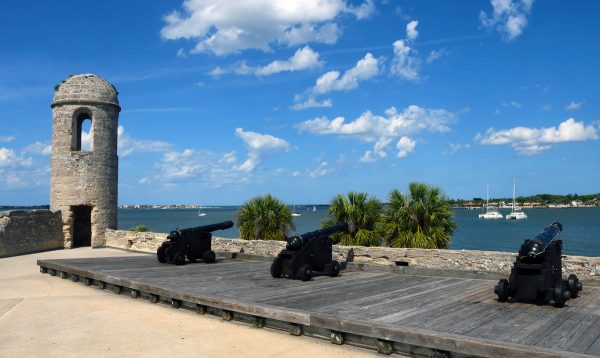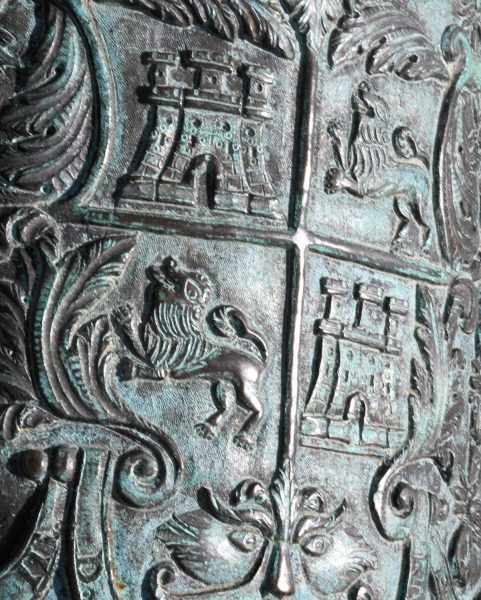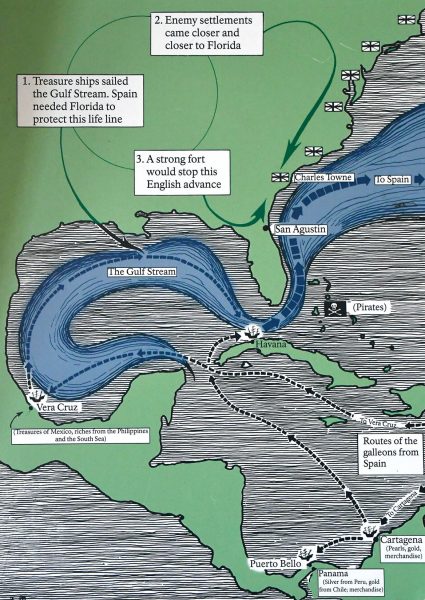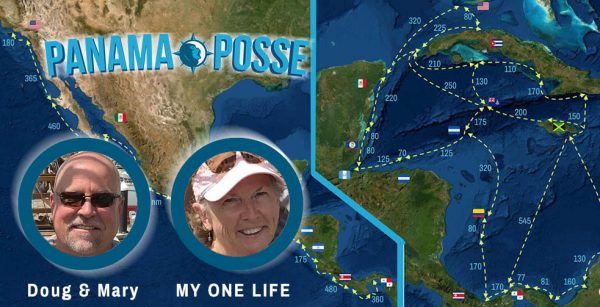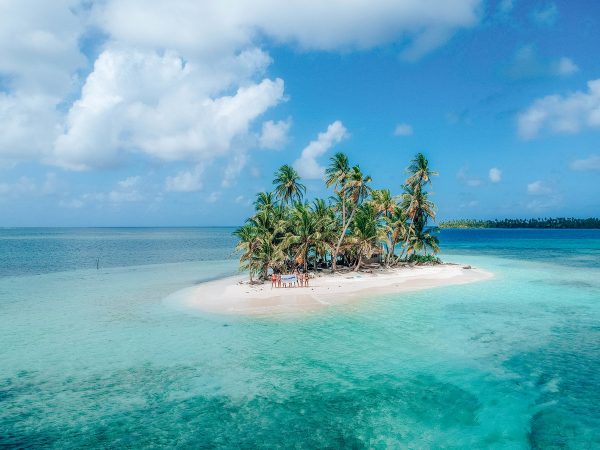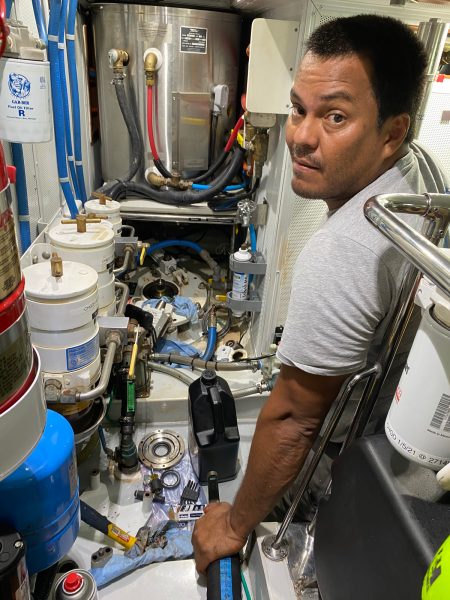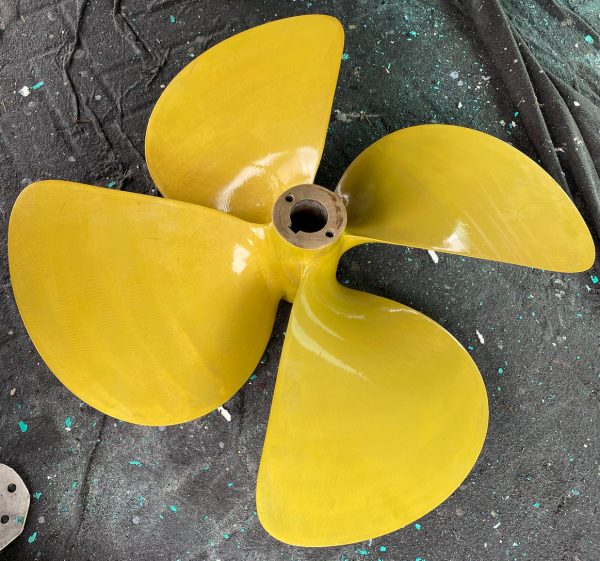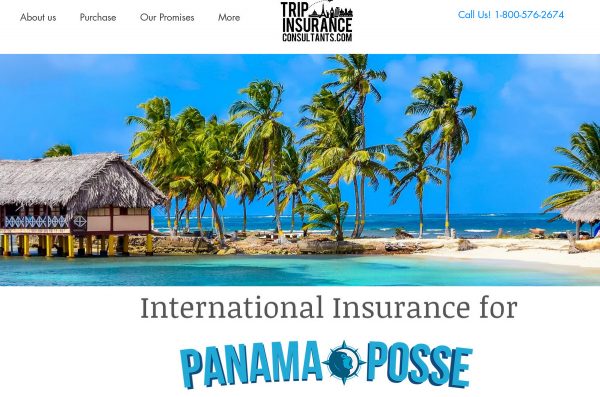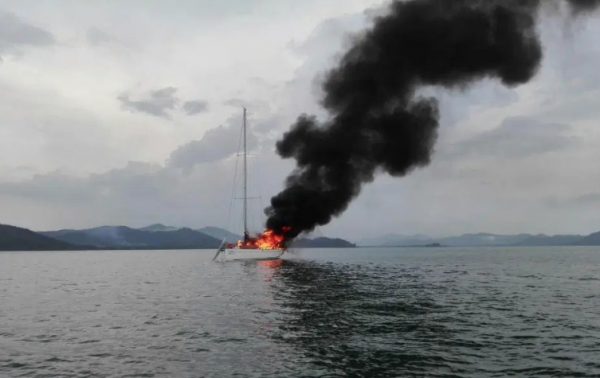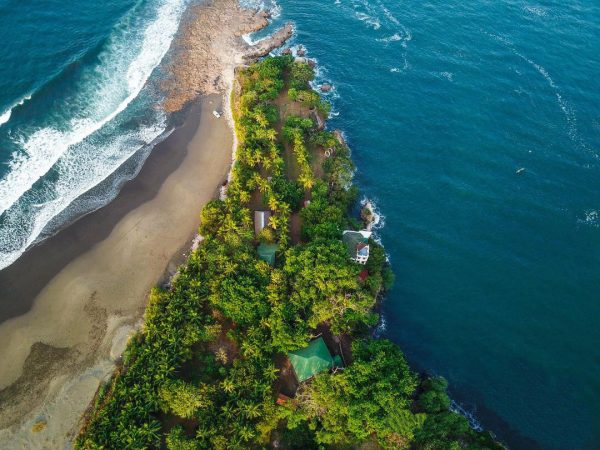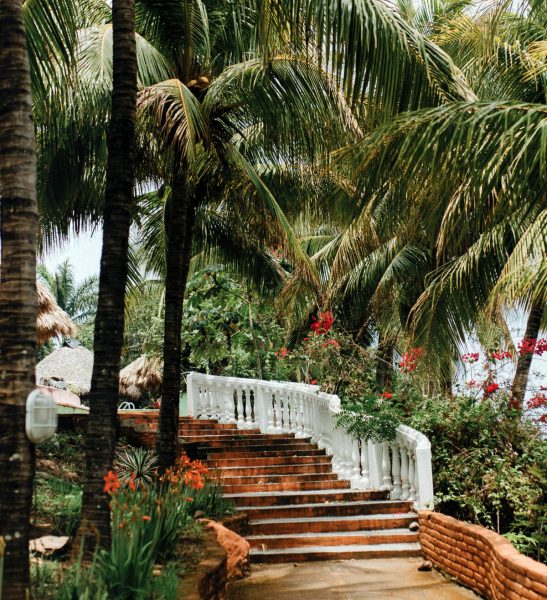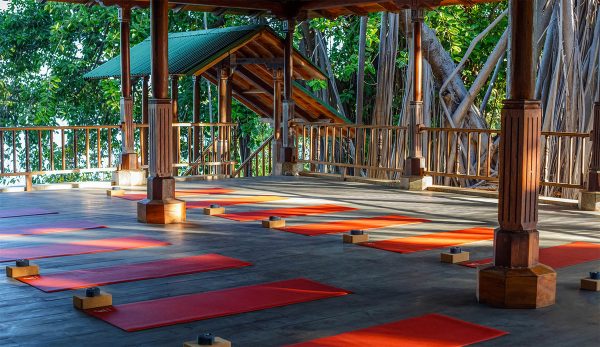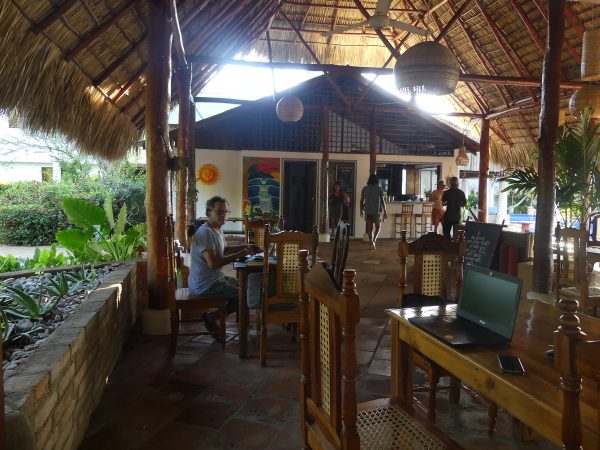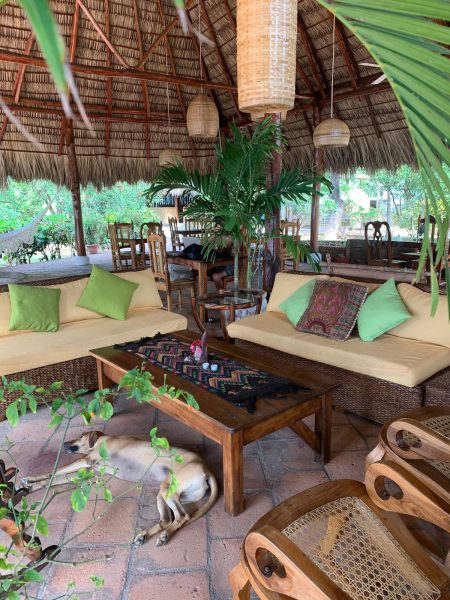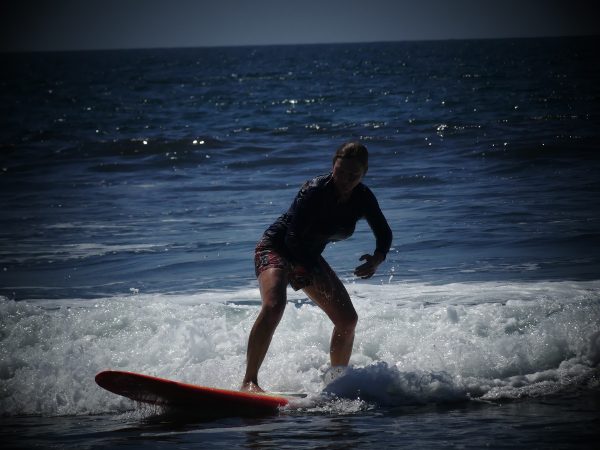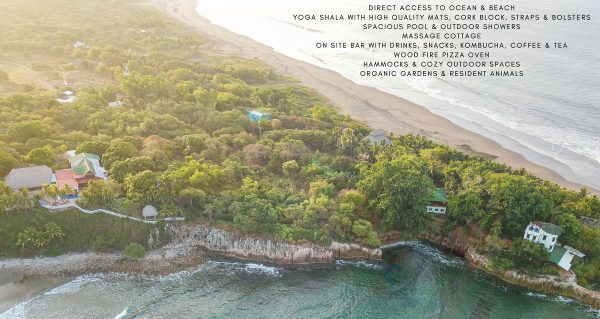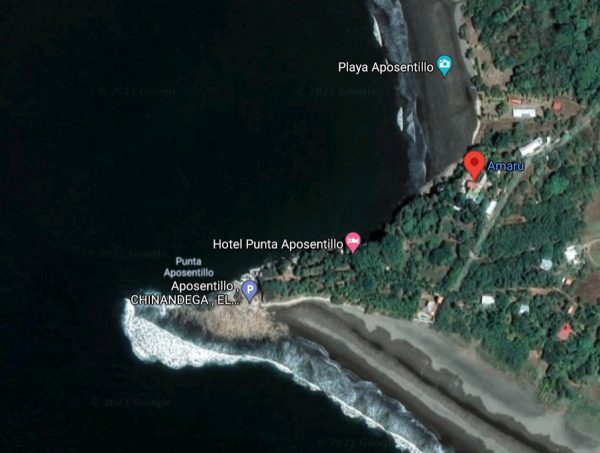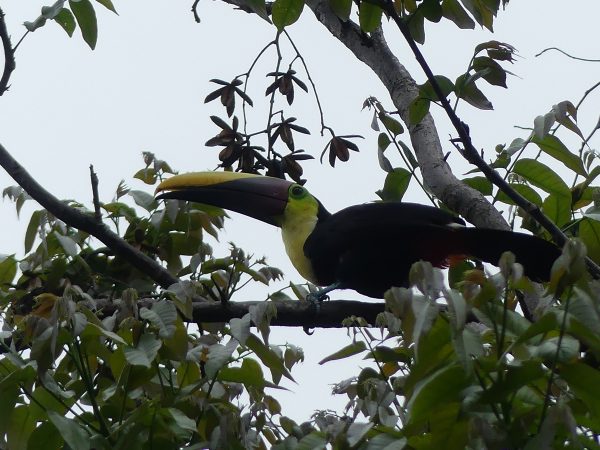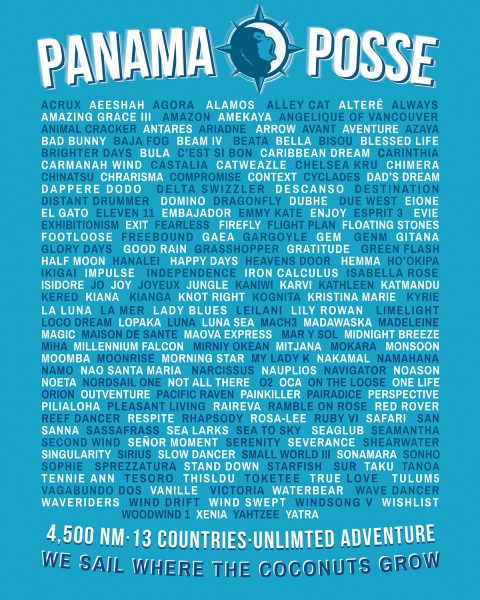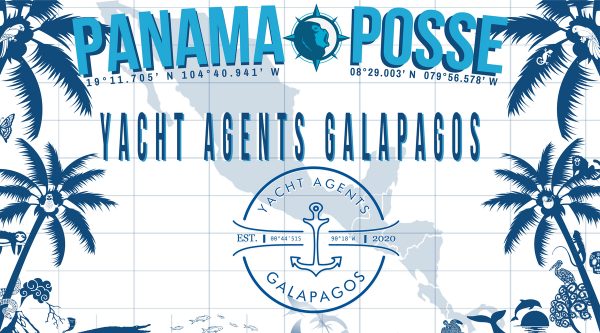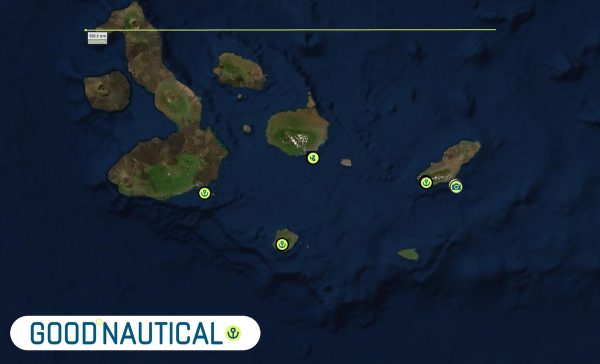
“Just let it go, then forgive, it’s the better way to live.
A grudge is like a cancer, true, it might just be the death of you. Forgive. Forget. Set it free.
Let the wind carry it out to sea.”
– Anonymous
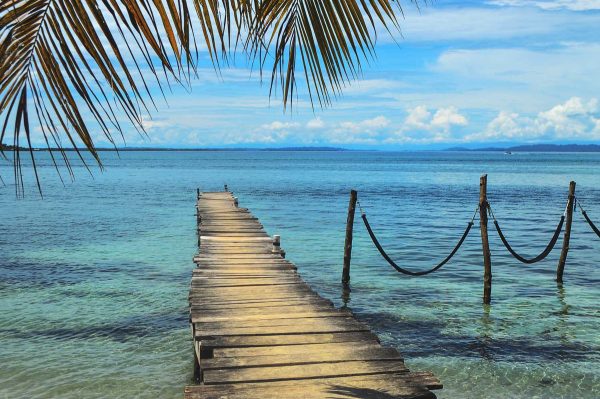
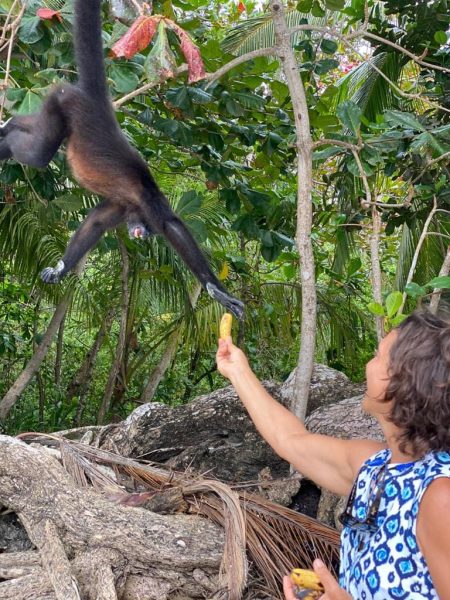
SERIOUS MONKEY BUSINESS WITH NINA OF SY ENJOY
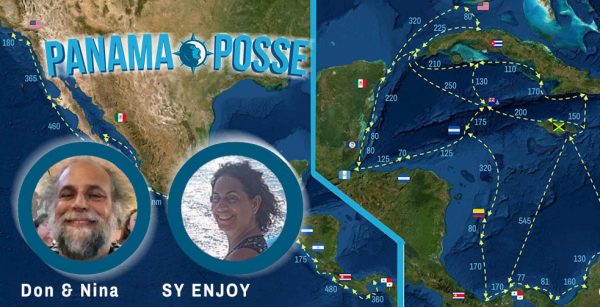
SY XENIA IN POSITION FOR THE CANAL CROSSING
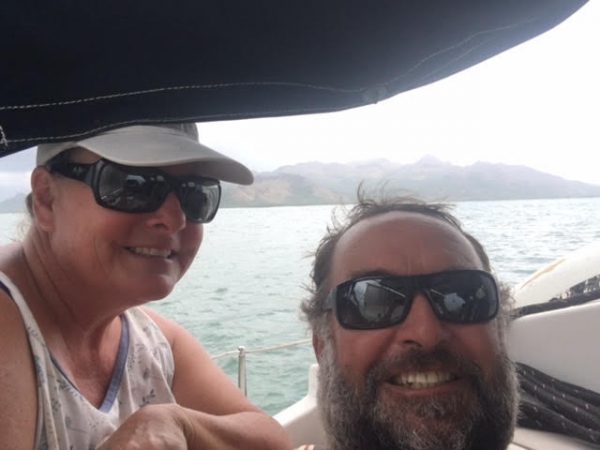
At La Playita marina! Spent night at John Wayne island. More pics to follow!!
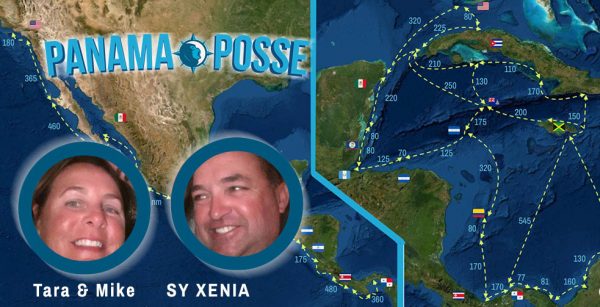
ENTRY INTO THE BIGGEST FISH CAUGHT CATEGORY
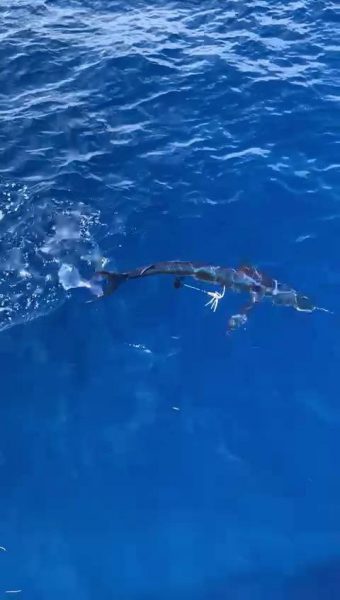
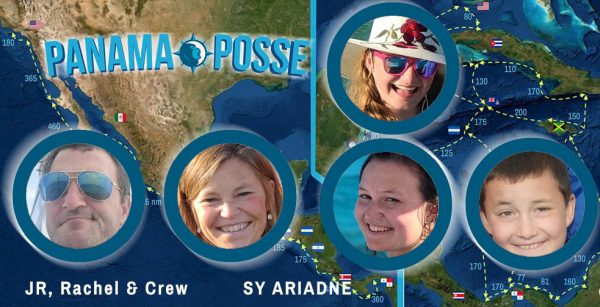
ATLANTIC GULF STREAM AIDING THE TRADE ROUTES FROM THE CARIBBEAN
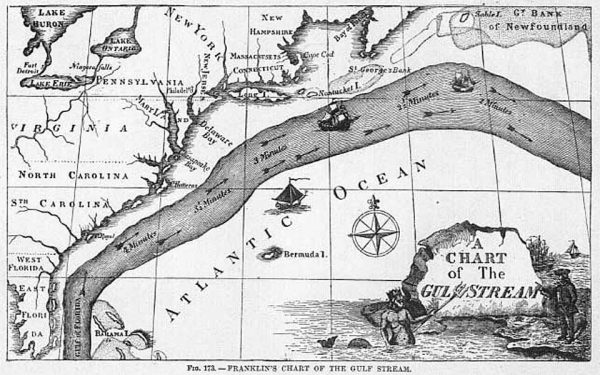
This map of the Gulf Stream appears in the book by Benjamin Franklin and dates from 1769. The Gulf Stream is depicted as the dark gray swath that runs along the east coast of what is now the United States.
In 1513, Ponce de Leon led the first known European expedition to La Florida, which he named during his first voyage to the area. He landed somewhere along Florida’s east coast, then charted the Atlantic coast down to the Florida Keys and north along the Gulf coast, perhaps as far as Charlotte Harbor.
In 1513, Ponce de León led the first known European expedition to La Florida, which he named during his first voyage to the area. He landed somewhere along Florida’s east coast, then charted the Atlantic coast down to the Florida Keys and north along the Gulf coast, perhaps as far as Charlotte Harbor.
On 2 April, 1513 Ponce de León sighted land which he named it La Florida in recognition of the verdant landscape and because it was the Easter season, which the Spaniards called Pascua Florida The precise location of their landing on the Florida coast has been disputed for many years. Some historians believe it occurred at or near St. Augustine but the ship’s log closest to the landing site, reported by Herrera (who had the original logbook) in 1601, was 30 degrees, 8 minutes.
After remaining in the area of their first landing for about five days, the ships turned south for further exploration of the coast. On 8 April they encountered a current so strong that it pushed them backwards and forced them to seek anchorage. The tiniest ship, the San Cristobal, was carried out of sight and lost for two days.
This was the first encounter with the Gulf Stream where it reaches maximum force between the Florida coast and the Bahamas. Because of the powerful boost provided by the current, it would soon become the primary route for eastbound ships leaving the Spanish Indies bound for Europe.
Castillo de San Marcos (on the Panama Posse MUST SEE list ) was founded at the jumping off point of the Spanish Fleet on their route back to Spain. The Fort has massive guns and mortars and was never taken by the British and survived two British sieges in 1702 and 1740. >>> It was also used by Slaves from as far north as New York to escape and seek freedom under the Spanish dominion which granted freedom to all those who became Catholics undermining British dominance.
On top of the canons is the Spanish Coat of Arms
Spain created an extensive system of defenses to protects it’s trade routes.
These main 7 fortified defenses are on the Panama Posse route
- Castillo de San Marcos, St. Augustine, Florida 29° 53′ N 081° 18′ W
- Fortaleza Ozama, Santo Domingo, Hispaniola 18° 28′ N 069° 52′ W
- Castillo San Felipe del Morro in San Juan, Puerto Rico 18° 28′ N 066° 07′ W
- Fuerte de San Lorenzo, Chagres, Panama 09° 19′ N 080° 00′ W
- Fuerte de San Juan de Ulua, Veracruz, Mexico 19° 12′ N 096° 07′ W
- Castillo San Felipe de Barajas, Cartagena, Colombia 10° 25′ N 075° 32′ W
- Castillo de los Tres Reyes Magos del Morro, Havana, Cuba 23° 09′ N 082° 21′ W
ENTRY INTO THE BIGGEST FISH CAUGHT CATEGORY

Caught and released a beautiful striped marlin 20nm east of Bahia de Los Muertos after an overnight crossing from Mazatlan.
SAN BLAS, PANAMA
THE MAGIC RATIO: 1 : 5+
CONFLICT RESOLUTION ON BOARD
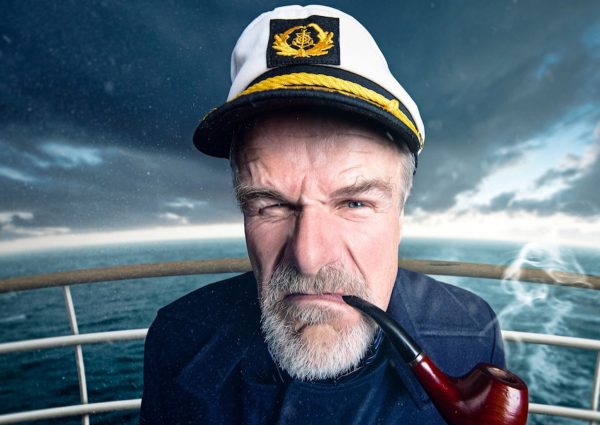
TENSIONS ON BOARD KILL THE ADVENTURE
To understand the difference between happy and unhappy couples, researchers asked couples to solve a conflict in their relationship in 15 minutes. After carefully reviewing these sessions and following up with couples almost a decade later, they were able to predict which couples would stay together and which would break up with over 90% accuracy.
Their discovery was simple. The difference between happy and unhappy couples is the balance between positive and negative interactions during conflict. There is a very specific ratio that makes relationships last. And it’s easy to see how this works on a boat as well.
That magic ratio is 1 : 5+ . This means that for every one negative interaction during conflict, a stable and happy relationship has five (or more) positive interactions.
ONE NEGATIVE INTERACTION
Examples of negative interactions include yelling, dismissive actions or gestures , as well as feelings of loneliness and isolation. While anger is certainly a negative interaction and a natural reaction during conflict, it isn’t necessarily damaging to a relationship. Anger only has negative effects in a relationship if it is expressed along with criticism or contempt, or if it is defensive.
Negative interactions during conflict include being emotionally dismissive or critical, or becoming defensive. Body language such as eye-rolling can be a powerful negative interaction, and it is important to remember that negativity holds a great deal of emotional power, which is why it takes five positive interactions to overcome any one negative interaction.
FIVE OR MORE POSITIVE INTERACTIONS TO COUNTER ONE PRIOR NEGATIVE INTERACTION
1) INTEREST
Displaying interest includes asking open-ended questions, as well as more subtle signals such as nods, making eye contact, and timely ‘uh-huhs’that show how closely you are listening. Are you curious about why he or she is upset ?
2) AFFECTION
Within conflict, displays of physical and verbal affection reduce stress. If you’re having a difficult conversation and your partner takes your hand and says, Gosh, this is hard to talk about. I really love you and I know we can figure this out together, you will likely feel better because their display of affection is bound to reduce tension and bring you closer together.
3) MATTER
DO small things often.†Small acts demonstrate you care and are powerful ways to enhance the positivity in your relationship.
4) APPRECIATION
Every time you express your positive thinking and give your partner a verbal compliment, no matter how small, you are strengthening your marriage. By focusing on the positives of your relationship and the vessel such as the good moments from your past and your partner’s admirable traits, you put positive energy into your relationship.
5) AGREEMENT
When you seek opportunities for agreement and express yourself accordingly, you are showing that you see your partners viewpoint as valid and that you care about them. An alliance in conflict, even minor, can fundamentally shift how couples fight.
6) EMPATHY & APOLOGY
Empathy is one of the deepest forms of human connection even if you express empathy non verbally through a facial expression or a physical gesture. If your partner is upset with something you said or did, simply apologize. If you can find a moment during conflict to say I’m sorry I hurt your feelings. That makes me sad, you will provide a positive and empathetic interaction that reinforces your bond.
7) ACCEPT
One of the best ways to do this is to summarize your partner’s experience during a recent conflict, even if you disagree. Remember that validation doesn’t mean agreement, but it does signal respect and signals an understanding that each of your perspectives are valid, even if they are opposed to each other.
8) HUMOR
Find a way to joke around that maintains respect and appreciation for your partner and that serves to bring you both closer together. illness, and finding moments to laugh together can ease tension in a heated conflict.
TESTING THE RATIO
For every negative interaction are there more positive interactions ?

PANAMA POSSE 20-21 GEAR SHOP
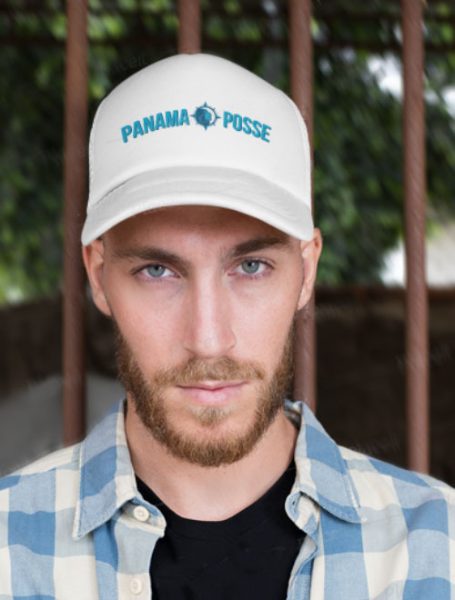

ORDER NOW FOR JULY DELIVERY >>
THE GEAR SHOP IS ONLY OPEN FOR 8 WEEKS
LATEST INTERNATIONAL COST OF LIVING INDEX
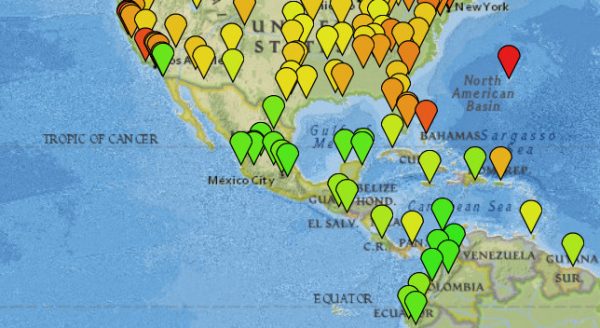
https://www.numbeo.com/cost-of-living/gmaps.jsp
WE SAIL W E S A I L W H E R E
COCONUTS GROW
JAGUARS ROAM
VOLCANOES BLOW
MONKEYS HOWL
WHALES SPLASH
MACAWS SQUAWK
COCONUTS GROW
SLOTHS HANG
PELICAN’S GLIDE
MOBULA RAYS JUMP
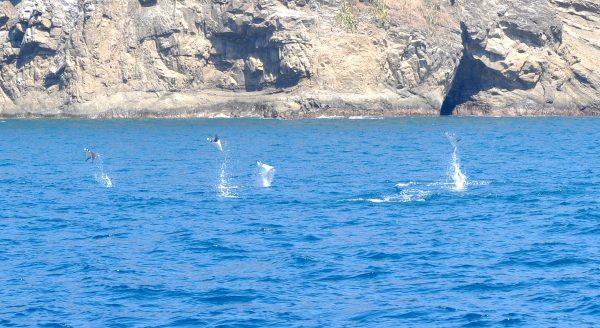
WE ASK FOR SYMPATHY FOR THESE FLYING DEVIL (FISH)
While the jumping behavior may occur during feeding or courting events, we believe that the most likely purpose of the jumping behavior is communication, which could have a variety of applications in different behavioral scenarios. However it is very likely that mantas, mobulas and eagle rays jump for a variety of reasons.
By jumping to identify the aggregation to other nearby individuals. In theory, this would increase the density and overall number of individuals, providing a higher mate choice ability and increasing the likelihood that any one individual gets to mate.
Species of this genus are often collectively referred to as “devil rays”, “flying mobula”, or simply “flying rays”, due to their propensity for breaching, sometimes in a spectacular manner. Depending on the exact species, the devil rays can attain widths up to 1.1 “5.2 m (3.6 – 17.1 ft), the largest being second only to the manta rays in size, which can reach 5.5-7.0 m (18.0-23.0 ft)
‘TIS THE SEASON FOR HAUL OUTS
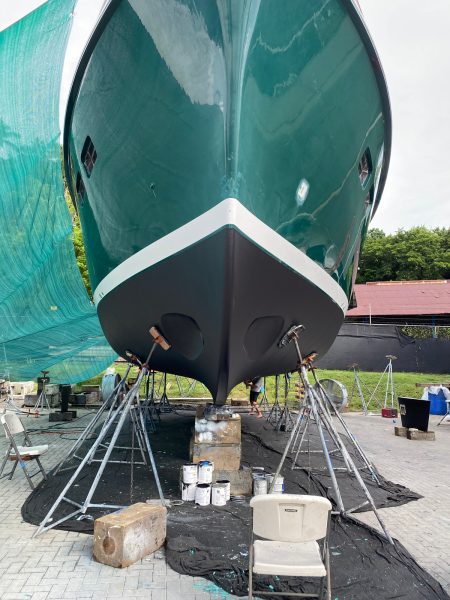
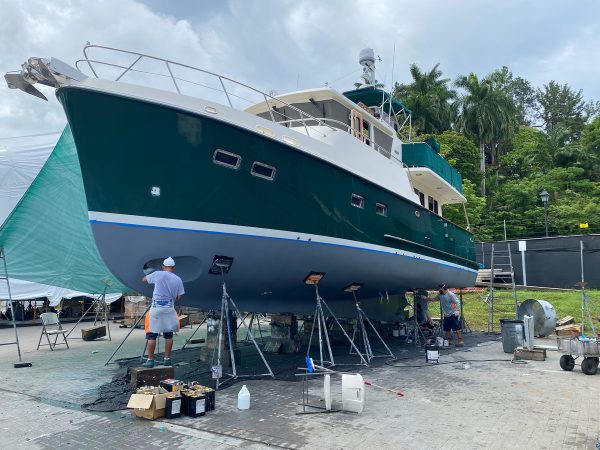
Quepos, Costa Rica – another difficult but productive day in the yard on the hard. Lucky Chucky out.
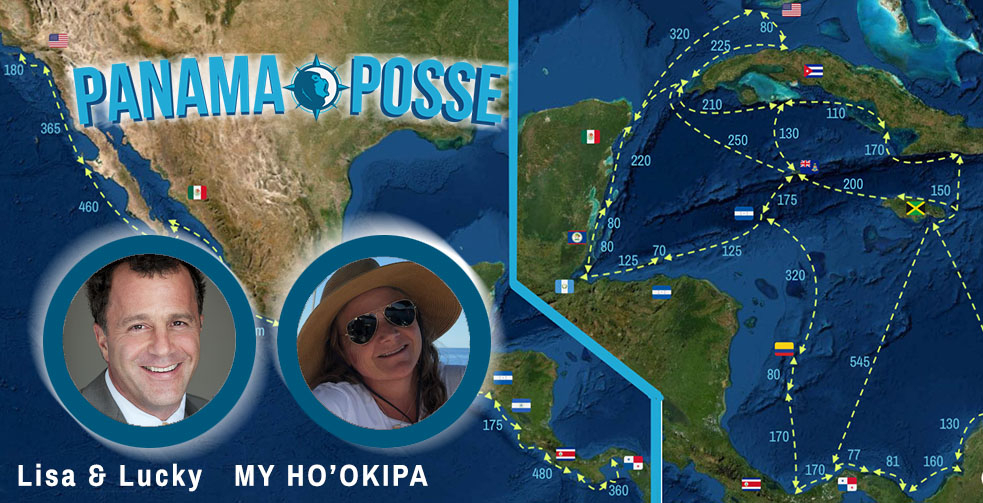
PANAMA POSSE SEASON FINALE AWARDS
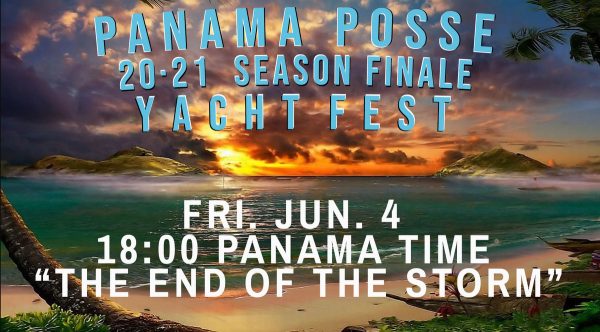
June 4th we will announce the winners and associated prizes in these highly competitive fields
- BIGGEST FISH CAUGHT
- HIGHEST WIND RECORDED
- BIGGEST MISHAP aka THE CAPTAIN RON AWARD
- MOST UNWELCOME VISITOR ONBOARD
- SPEEDY GONZALEZ AWARD
- PANAMA POSSE YODA OF THE YEAR
- PICTURE OF THE YEAR
- GOOD SAMARITAN OF THE YEAR
LAST SEASONS RUNNER UP BIGGEST FISH CAUGHT AWARD BY SY SIRENA
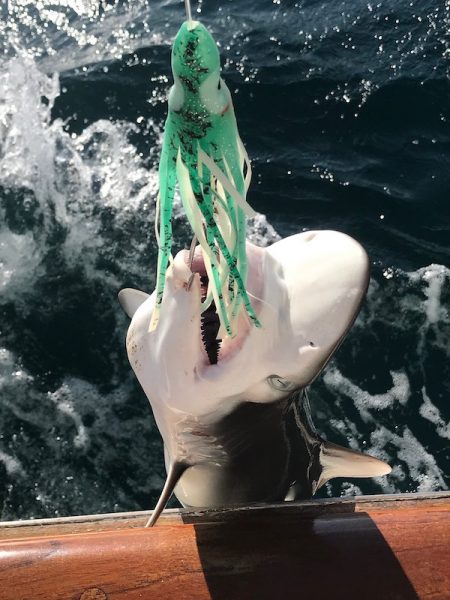
* PRIZES TO BE AWARDED *
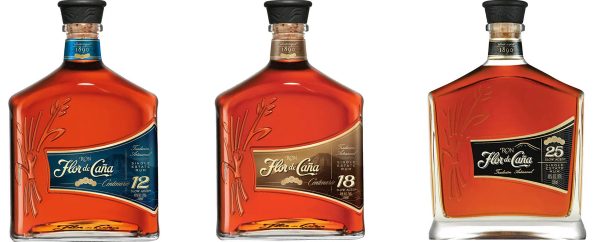
Flor de Cana Rum – the GOOD stuff
1 Week Dockage at Marina Papagayo, Costa Rica
1 Week Dockage at Vista Mar Marina, Panama
1 Month Mooring on Unkle Bill’s mooring in El Salvador
3 Days Dockage at Marina Vallarta, Mexico
1 Predict Wind Pro Subscription
and more to come … !
* subject to availability, local laws, restrictions and all the other things but are avoidable on the high seas or in international waters
PANAMA POSSE
Affordable International Travel Medical Insurance Partner
including Costa Rica Covid Insurance a.m.o
https://www.tripinsuranceconsultants.com/panamaposse
LIGHTNING INSURANCE CLAIM REPORT FROM PAST FLEET UPDATES COSTA RICA
SY Sugar Shack ( S1 ) was struck by lightning in Herradura, Costa Rica in May 2018.
Below is a very helpful document from Panama Posse Season 1 authored by
SY Sugar Shack on how to deal with boat insurance companies .
Preventing and mitigating claim issues
This document is based on hindsight and our experience with our insurance carrier.
Preventative Measures prior to a claim
Document, document, document everything. With photos, receipts, affidavits, and anything that can support your future claim of repairs, maintenance, service, purchases, and upgrades.
Ask your insurance carrier to provide you with Underwriter contact information. This will be challenging as they won’t want to provide it. But it will benefit you during a claim, if and, when you have problems.
Obtain information on how to file a complaint in the event your claim is not handled properly. This might be on your policy, if not, ask your agent or insurance carrier.
Maintenance receipts should be provided for all professional work (even when it’s free). Dated receipts should provide a detailed description of what work was completed. Before & after photos are a bonus.
Our adjuster asked for proof of maintenance on our alternators. The receipts said, lternator repair and replaced 3 diode which did not qualify as bench testing or maintenance.
Receipts – save all receipts (digital is best to easily prove online). If it is not clear what item was purchased, note it on the receipt.
We bought a Deka 24M7 at Island Water World. Receipt read Marine Dual Purpose A002401 We had to show A002401 s the stated battery by linking back to the IWW website.
Inventory your boat and update every 6 months when possible. It will be much easier to update an existing equipment list at the time of an incident than it will be to create a new one.
List should include: Item, Model & Manufacturer, Age, Cost at time of purchase, Location.
This list will help ensure that you check functionality on all parts, after an incident. You don’t want to miss something. On a lightning strike you want to check everything with a circuit board/panel.
Every 6-12 months, photograph or video tape all electronics, mechanical equipment, anchor, chain, and high dollar or valuable items. This provides proof of ownership and proof of state of gear.
You might need to provide before and after photos. Lightning damaged our chain and anchor with severe ARC marks, pitting, and gauges. Who thinks about photographing your anchor? Luckily, we had a photo, underway, of dolphins at the bow showing the anchor in foreground.
Policy
Be clear what is and isn’t covered in your policy (housing while boat is on the hard, haul out, storage, marina, survey, surveyor, rig check). Good to know this before you file your report.
We couldn’t stay on the boat while it was on the hard. Housing for 5 months was over $4k and insurance only covered a small portion ($1000).
Be aware of your deductibles and when they are due.
Are they due up front or deducted from amount paid to you?
Ask how claim payments are handled. Are you responsible for all upfront expenses, then receive reimbursement from insurance company? Or do they provide you with lump sum good faith payments based on estimates, and settle balance at the end?
Our adjuster originally wanted us to cover all expenses, then submit receipts. Our claim was several hundred thousand dollars which would have been a huge financial hardship. With lots of negotiating, we secured several small payments to cover the cost of equipment.
We paid the final lump sum and waited for reimbursement once invoices are balanced.
Read the fine print on your coverage. Some companies double the deductible due to a lightning strike.
Immediately after the incident
Do whatever you need to do to minimize and mitigate additional damage to your vessel.
Document everything you do to mitigate the damage (provide photos if possible)
Temporary fixes included some navigation lights, head, water
Photograph and document all damaged items.
We ascended the mast, photographed VHF antennae where lightning struck.
Swam on bottom of boat to ensure no holes or exit points were found, checked all bilges, etc
Photographed and collected all smoking and burnt items.
Do not discard any damaged items. Save everything including fuses, shards of damaged equipment.
You (or a vendor) be required to hold on to all damaged equipment for a year.
Reporting the incident, report all pertinent information: name, boat name, policy number, date, time and location of incident, witnesses, type of damage, extent of damage, weather, parties involved, etc
Request boat/rig survey, haul and whatever it takes to determine the full extent of damage to your boat.
Adjuster denied our request for a boat, rig survey, & haul out, for 10 days before finally agreeing.
If you are in a holding pattern (waiting for approval: move boat, haul out, survey, whatever), be proactive.
Research haul out facilities near you (rates, availability, distance from you, possible routes).
Document damaged items. Try to do an initial damage assessment including make, model, age, type, damage incurred). Your equipment list will come in handy if you have been maintaining it.
Again, another useful way to ensure you check and double check all components.
Research local electronic and/or mechanical vendors whom you might hire.
If you can, ask them to come out to the boat to assess damage (if at no charge).
Constantly check and recheck equipment as it may work one day and not another.
Constantly check and recheck all safety protocols.
Be proactive get estimates/quotes for any perceived costs or expenses ahead of time and get the insurance company or adjuster to approve them prior to commencing work.
Remember to include everything you can think related to the claim. Related costs could include visa extensions, boat permit extensions, yard fees, delivery fees, duty, shipping, tax, etc
Costa Rica does not recognize “Yacht in Transit†and therefore charged us duty on all equipment.
If your claim requires a surveyor (all lightning strikes should be surveyed), they will be provided by the insurance company. Which means they work for the insurance company and not you.
Prior to scheduling the surveyor for the insurance company, hire your own surveyor who will work for you. Then tell your insurance company that your surveyor will meet their surveyor at the boat at same time to ensure there are no discrepancies. Keeps everyone honest. Yes, you will have to pay for your surveyor, but it will be well worth it in the end to ensure an honest damage assessment report.
Ensure that both surveyors see the boat for the first time at the same time.
Surveyor and damage assessment
All surveys (whether related to a claim or not) should always mention all expensive parts, components, electronics – listed out, photographed, with model and/or serial numbers. Ask the surveyor to ensure that he includes everything possible.
Insurance denied items because they were not noted on our required standard policy renewal survey taken 2 years prior. Our Wet Sounds Tower speakers were installed, and we provided photos and receipts on top of surveyor witnessing them on board. But because they were not listed on the survey from a few years prior they wanted to deny them as part of the claim.
In between surveys, document maintenance, upgrades and purchases with detailed receipts and photos.
During a claim, you may need to provide a list of upgrades, maintenance, & purchases that have occurred since last survey.
If your insurance carrier sends a surveyor, do your homework and find out what you can about this surveyor and their company. (Google, LinkedIn, BBB, cruiser forums)
Our 1st surveyor had never surveyed a catamaran, nor had he surveyed any boat that was struck by lightning. He did not provide much guidance or feedback.
The 2nd surveyor, David Morris at Morris Marine had a really bad Yelp review. Previous insureds stated he lied about equipment state and said one thing at the survey and reported something completely different to insurance carrier. Unfortunately, he did the same thing to us as well.
Surveyor will reach out to you to schedule the survey. Be sure to ask them, if they have surveyed a boat like yours, in incident like yours, and what their general experience is with damage assessments. Be aware of their experience and their limitations so you can prepare accordingly.
If you select not to hire your own surveyor, ask the insurance company’s surveyor if you can record (audio) the survey to ensure there are no discrepancies.
Our surveyor would not let us record audio (which is fishy in itself) and he said one thing at the survey and reported things differently on the report.
If they won’t let you record, document the conversation in a notebook and read it back to surveyor to ensure he/she is aware of what you understand and wrote.
The damage assessment report (or survey) will belong to the insurance company, but you can request a copy, which is highly recommended. This will allow you to know what is covered as part of the claim.
Have surveyor photograph everything, especially if you can show damage or non-functionality.
Follow surveyor around and note what he notes. What’s functioning or not, what meter readings are
During damage assessment, tell surveyor everything you can think of including all repairs, maintenance upgrades, purchases. Especially if they’re not noted on last survey.
This is easier if you have a running log of repairs, upgrades, and maintenance. We did not.
We failed to mention the alternator maintenance (even though we had receipts of maintenance), they used the fact that we did not mention it during the assessment as an ‘issue’
If your adjuster or surveyor states a piece of equipment is not damaged due to the claim, and you truly believe it was damaged because of your incident – take it to an expert. Yes, you may have to pay for the test or analysis, but it will be worth it to support your claim. Back your claim with technical expertise.
Our stainless-steel chain was damaged from the lightning strike. The adjuster sent a sample to a lab to have it analyzed and the results showed a 304 composition. Our receipt showed 316 grade, so we sent it to a metallurgic analysis lab to prove that it was in deed 316 composition.
Our house batteries, alternators, and windlass were all damaged due to the strike. The surveyor said they stopped working due to maintenance (yes all at once). We had to bench test all equipment with a third-party vendor and provide a written root cause analysis.
General Notes:
Be up front, honest, and transparent.
Be proactive, professional, and persistent.
Fight your claim with technical points, written affidavits, documentation, photos, videos, and receipts.
Remove all emotion from your correspondence. It is very easy to get frustrated and angry when you are dealing with delays and denials. But, don’t express your feelings, fight with facts and hard evidence.
Don’t blog or post on social Media updates or information on your claim, while the claim is active – ever!
Never make legal threats against any insurers unless you are fully prepared to go to court. Especially, with the Lloyd’s Market. Attorneys told us that they will stop payments, close your claim and force you to litigate in London (per policy).
Ensure all invoices match estimates. Do not give them any reason to deny your claim.
Provide a spreadsheet (they will probably provide a format) with item, damage, model, manufacturer, age, repair or replace, estimate to repair or replace, cost to repair or replace, final cost to be paid.
Our insurer also asked for links to repair parts to ensure vendor did not have too big of a markup.
Fight hard for what is right. Being honest and don’t commit insurance fraud.
Insurance companies count on you getting tired of the fight and/or backing down. Some insureds just settle for whatever they are willing to get despite true damage by a claim – fight for what is right. You paid for a policy of coverage and deserve that coverage.
Matthew & Christine
SY SUGAR SHACK
currently in French Polynesia
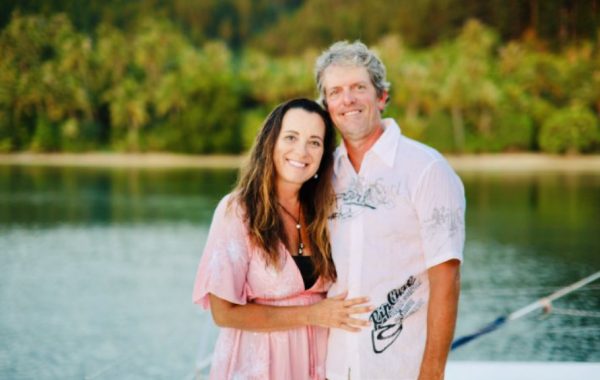
HO’OKIPA TESTIMONIAL AMARU WELLNESS SPA & SURF CAMP
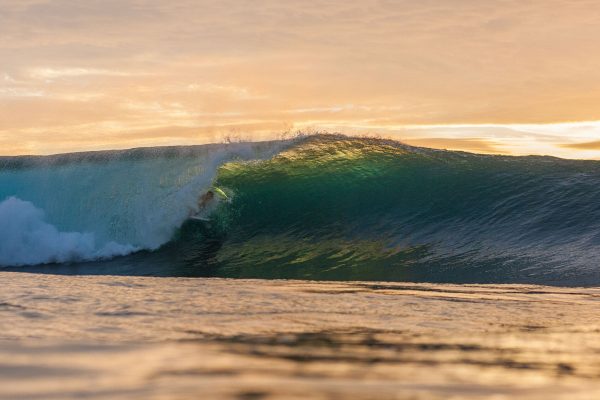
Puesta Del Sol, Nicaragua – Amaru Wellness Spa, Resort & Surf Camp Testimony:
We were in search of a place to de-stress and get some R&R away from the boat for a few days after cruising overnight from Chiapas, Mexico to Marina Puesta Del Sol in Nicaragua and while walking around nearby Punta Aposentillo we literally stumbled on Amaru Wellbeing Resort. What a great find! We ended up staying a week.
We could walk along the beach from the marina to Amaru in 40 minutes or ride our moto in 10. Amaru met our expectations and then some. The low-key place is beautiful and inviting. Amaru is a perfect place to chill and relax. The place has a wonderful vibe that emphasizes enjoying life, serenity and the gorgeous environment surrounding it. Amaru is all about sustainability which we appreciate.
We loved having the options to relax by the pool overlooking the ocean, wander the gardens, stroll on the beach below, have a massage in the private cabana with ocean view or take a yoga class in Amaru’s beautiful, open air yoga studio built of gorgeous wood that feels like you are in a large treehouse, or nap in a hammock. Every evening the views of the sunset are incredible.
Being adventuring sorts we wanted to learn to surf so opted to hire Amaru’s surf instructor. $35 per 2-hour session for the two of us, including transportation and boards. On day 2 we both got up! We surfed a couple hours each day and had a chance to visit several beaches and local surf joints we would have missed otherwise. We surfed every morning and had a yoga class every afternoon. We thoroughly enjoyed having small tailor-made yoga classes for surfers who need a nice stretch before or after catching some waves, but we also attended classes just for a chance to loosen up the muscles and calm the mind.
The food was delicious — best we had in Nicaragua and frankly in Costa Rica as well. It was always fresh and locally sourced with fruits and vegetables grown on the property. Special shout-out to the incredible fish dishes, daily homemade breads, wraps and salsas! The dining is al fresco under the patio. There is also a great pub/café that is open to the public on Friday and Saturday afternoons to evening so we had a chance to meet some of the locals and surfers who stop in for a cold cerveza, smoothie or a good meal.
We like to get massages and we really enjoyed the massages we had at Amaru. They have a professionally trained masseuse from Brazil who is excellent.
Amaru is managed by a 34-year-old Swiss woman named Marcia and her 32-year-old American business partner Garrett. They and their whole team have a great energy. Super friendly and accommodating. They have done a great job. Amaru is all charm, surrounded by gardens and orchards.
After our initial stay we came back a few more times to hang out with our new-found friends, have a massage and do some yoga classes. Nothing beats Amaru’s ambience and a nice glass of wine.
PANAMA POSSE DISCOUNT
We love to offer
15% discount on our Restaurant Menu offerings
10% on overnight stay.
CONTACT
Amaru Wellbeing Resort
Marcia De Queiroz
Punta Aposentillo Nicaragua
www.amarunicaragua.com
Whatsapp: +50588988878
Insta: amarunicaragua
email: info@amarunicaragua.com
LOCATION
Bringing people together in an intimate setting – creating a safe and productive space for wisdom and knowledge to be shared.
Amaru Food Philosophy
We bring as much of our produce from our own gardens to the table, and what we cannot source from our own soil, we bring from that of our neighbors. Our meals are inspired by the seasons, as nature intended them to be, and are seasoned with the authenticity of Nicaraguan spices and flavors. We cater to all dietary requirements, so no matter your diet, our buffet style approach allows you to choose your own adventure and satisfy both your body and soul. estomago lleno, corazon contento†(full stomach and happy heart).
Gorgeous Toucan shot live on a hike outside Quepos, Costa Rica. Lumix camera/600m lense/F2.8 by Ho’Okipa
SY KNOT RIGHT TRAILER HAUL OUTAT VISTA MAR MARINA, PANAMA
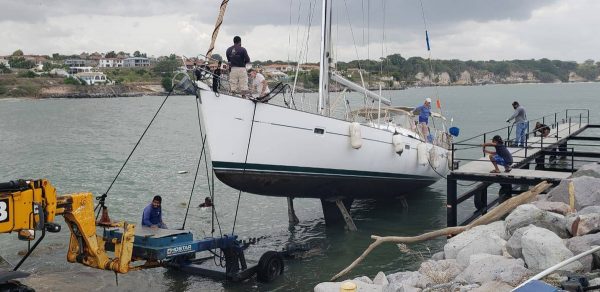
Haul out was with 4 attempts, the swells kept moving the trailer underneath
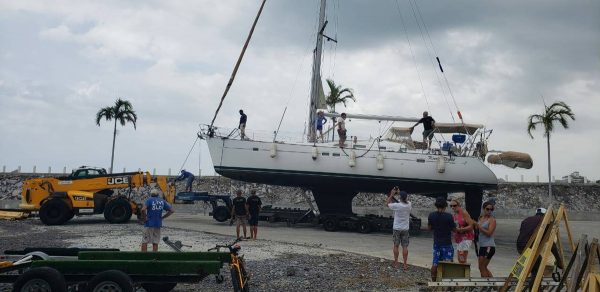
Knot Right on the hard !
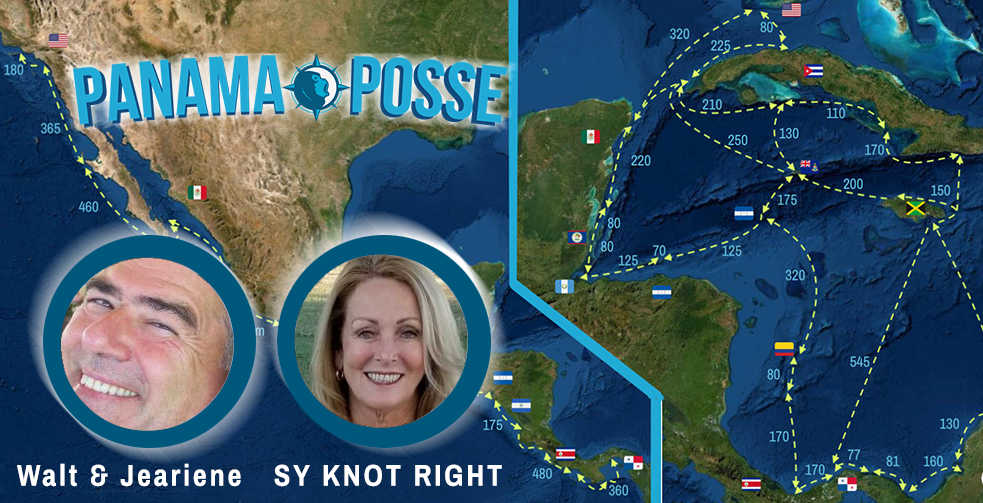
LINTON BAY MARINA SPONSORS THE PANAMA POSSE
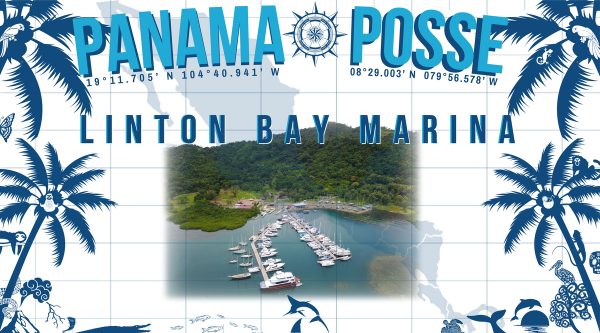
SAVE THE DATE

Friday June 4th, 2021SEASON FINALE 18:00 PANAMA TIME
PANAMA POSSE YACHT FEST CELEBRATION “
OFFICIAL AWARD CEREMONY
MUSIC, RUM, FUN, STORIES & MORE
@ VISTA MAR MARINA, PANAMA
PARTY AGENDA
OPENING
PANAMA POSSE TOAST
YOUR STORIES ( Q&A )
POSSE NEWS FOR NEXT SEASON
PARTIES AND WHERE TO BE
THANK YOU TO OUR SPONSORS
RUNNERS UPAND AWARDS
TOAST
MORE STORIES
MUSIC
DANCING
SLEEP
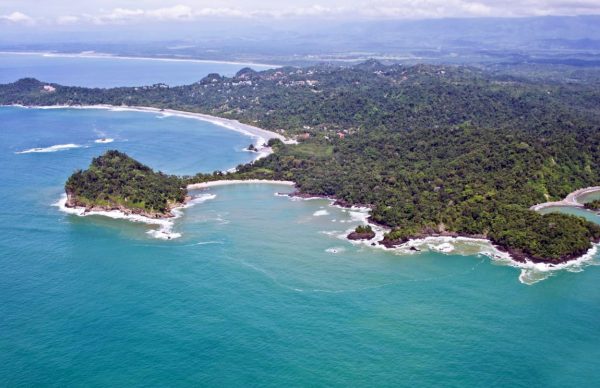
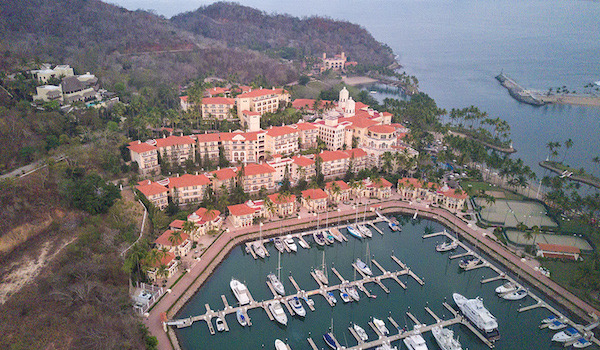
Here are our tentative dates for our seminars in early December 2021 in Barra de Navidad, Mexico
Thursday December 2nd, 2021
@ 13:00 ROUTE PLANNING & NAVIGATION
Friday December 3rd, 2021
@ 13:00 COMMUNICATIONS, WEATHER, SAFETY, MEDICAL AND SELF RESCUE,
Friday December 3rd, 2021
@ 17:30 PANAMA POSSE KICK OFF PARTY
Saturday December 4th, 2021
@ 13:00 SATELLITE CHARTS / OPEN CPN / GOOD NAUTICAL
Saturday December 4th, 2021
@ 17:30 PANAMA POSSE OVER THE TOP POT LUCK RED CUP DOCK PARTY
Sunday December 5th, 2021
@ 10:00 PANAMA POSSE SWAP MEET
Sunday December 5th, 2021
@ 13:00 PROVISIONING, WHAT TO SEE AND DO, RECAP, Q&A
![]()
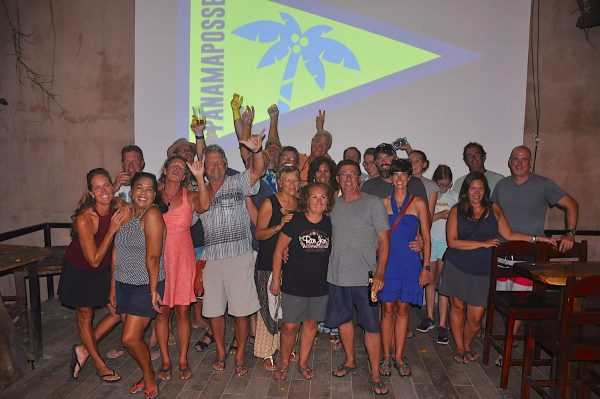
PARTY AT COCONUTZ
MARINA MAKAX ISLA MUJERES SPONSORS THE PANAMA POSSE
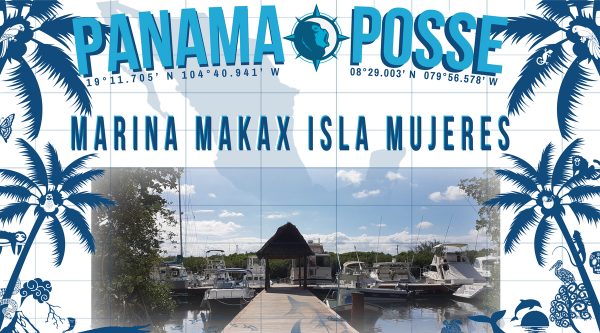
ORDER YOUR PANAMA POSSE GEAR
PICTURE OF THE WEEK
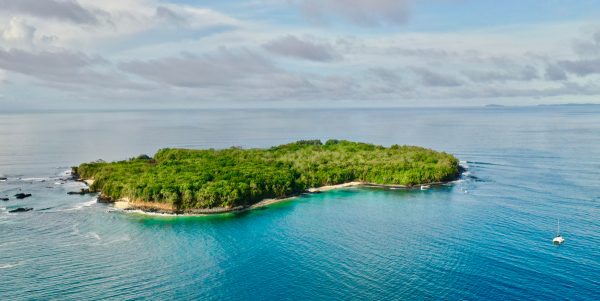
Outventure at anchor
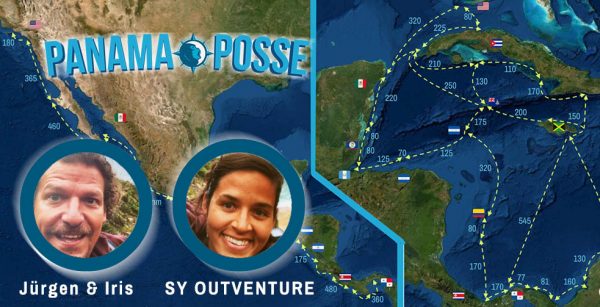
COUNTRY QUARANTINE UPDATES >>
PANAMA CLOSES BORDER WITH COLOMBIA
Panama announced on Wednesday, May 19, the temporary closure of its border with Colombia, hours after the neighboring country reopened the land, river, and sea borders that it had been closed for more than a year due to the pandemic.
The Republic of Panama expresses its concern regarding the decision of the Government of the Republic of Colombia, contained in the Resolution of the Ministry of the Interior 0667 of May 19, 2021, by which they determine the opening of maritime, land, and river crossings on the common border,†said a statement by the Panamanian Foreign Ministry.
According to the Ministry, this measure puts at risk “the significant progress made by all Panamanians to control the Covi-19 pandemic, as well as border security and control of the migratory flow. It indicated that it has been determined to temporarily suspend the entry into the national territory, by land, sea and river, of all persons from Colombia, as of May 20, 2021.
The Colombian government opened the steps with Panama, Peru, Ecuador, and Brazil “from zero hours (0500 GMT) on May 19, 2021,”

Panamanian Foreign Minister Erika Mouynes
Covid Vaccination Rates % Fully / Partially
Antigua and Barbuda 7.20 / 25.96
Aruba 46.66 / 11.88
Bahamas 1.5 / 11.4
Belize 2.67 / 12.74
Canada 4.79 / 49.63
Cayman Islands 55.62 / 9.49
Colombia 6.28 / 4.82
Costa Rica 14.59 / 5.44
Cuba 7.05 / na
Ecuador 2.92 / 5.64
El Salvador 11.00 / 6.25
French Polynesia 14.22 / 5.58
Germany 16.32 / 25.86
Grenada 5.13 / 7.08
Guatemala 0.25 / 1.90
Honduras 0.28 / 1.10
Jamaica 0.5 / 5.1
Mexico 9.24 / 5.75
Panama 7.97 / 9.80
Turks and Caicos 29.62
United Kingdom 35.42 / 21.46
United States 39.70 / 9.85
Worldwide 5.53
LAYING UP FOR THE SEASON IN THE TROPICS
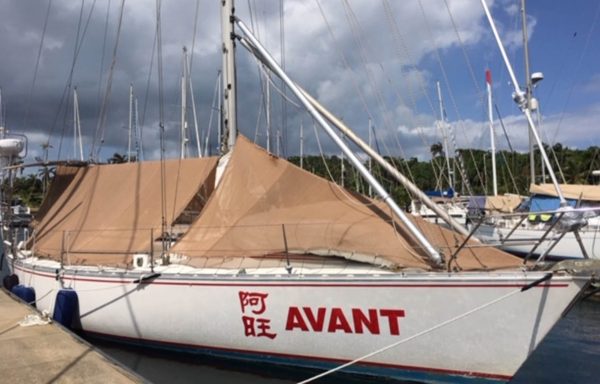
We’ve had Avant offshore for a few years now and have developed a routine for laying her up for the off season. It’s a fair amount of work, but pays dividends in letting us come back to a vessel that’s not suffering from mold or mildew, and hasn’t degraded (much) from the weather when we’re away. We have set Avant up to wait for us on the hard and in the water, and each has its unique requirements.Sailing in Mexico and Central America we have rarely seen rain in the cruising season (October to May) but we know the rainy season (June to September) is a different story. We have never ‘enjoyed’ a storm aboard, but we know that hurricane season will bring them in our absence. Preparing the boat takes a few days, but the effort pays dividends on our return.
Mold
Mold is perhaps the most pernicious hazard for a laid up boat in the tropics. If it gets a foothold, the warm, moist interior of the boat is the perfect environment for it to grow, and it will grow everywhere, on any surface. To forestall its growth, we clean the interior aggressively and then spray all surfaces with a mixture of straight vinegar mixed with a drop of dish soap per liter/quart (the dish soap is a surfactant and stops the vinegar from beading), wipe them with a cloth wet with the same mixture and allow the vinegar to dry in place. The ph value of vinegar is antithetical to mold growth, and it simply won’t start where there is vinegar on the surface. The smell is overwhelming on application, but fades in an hour or so, and is undetectable on our return. We also mist curtains and cushions with the same mixture, spray liberally in the bilge, and leave a few bowls filled with just vinegar (no soap) to evaporate inside while we’re away in various places around the boat. We use at least a couple for gallons for this process.We prop cushions on their sides/edges just before we go to allow maximum air circulation, and leave all cupboard doors ajar as well. Clothing and bedding is dried in the sun and then plastic bagged before stowing below so it can’t get damp.If we’re on shore power, we leave a cheap 110 volt fan below to circulate the air, and if not we leave our Nicro day/night solar vents running. One year in El Salvador we were able to leave an air conditioner running, which was great, and where Avant is now (Panama) we have a dehumidifier running 24/7 to control the moisture.If you choose ‘electronic remediation’ (dehumidifier or air conditioning) for mold control, you need to plan for power outages and recognize that the dockside or in the yard shore power will likely be somewhat unreliable and will suffer multiple outages over the season. Fancy new style microprocessor controlled units will usually not restart after a power outage or voltage drop; old style, bog-simple units with mechanical switches usually will restart after an outage (and as a bonus, they’re usually cheaper, too). A dehumidifier or stand alone AC will need a drain point, such as a galley or head sink drain, while a window style AC can be set up to drain overboard or through cockpit drains.
Tarps
Tarps are used for a couple of things: to keep sun off the decks and thus control heat, and to keep the rain off portions of the deck. We use them, but under the tarps we do get algae on deck. There are cheap tarps and not so cheap tarps, and the cheap blue type last mere days or at best weeks in the intense sun and can’t withstand summer squalls and storms. We buy ‘good ones’ (usually they’re not blue, and sometimes are silver on one or both sides) and get them double the size we need, and put them on doubled up. The side exposed to the sun will rot and fail in the UV, but the second layer will usually last out the season. We don’t use the grommets on the tarps, but instead gather the fabric of the tarp around a ping pong ball and secure that with a constricting loop knot (a topsail sheet bend tied back on the bight). The grommets are the first point of failure. After a season, the tarps are garbage.Run them as low as possible so they have the lowest windage and cover the most deck area.We also have fitted sunshade material awnings that ride low to the decks and are secured to the toe rails and cover the decks that we put over the tarps. They shade the decks where we don’t have tarps, and where they ride over the traps they add UV protection for the tarps. Sunshade material is widely available at Home Depot and other DIY shops, usually in the garden department. It’s easy to sew on any machine, and the plastic grommets they sell for it are easy to apply seem to last well. As with tarps, grommets are the first potential point of failure, but as we have them every foot along the edge, they spread the load well.
Bugs
Of course, we live in fear of a bug infestation of some description while away. We buy cockroach bait (apparently the kind that comes in a tube like toothpaste is best) and roach hotels and place them around the boat. We use the whole tube, as this is not the place for half measures. We have found 2 dead roaches and no live ones aboard on our return in the 14 years we’ve been laying up. We shudder to think how many we might have found without the poison set out.
Food
The temperatures in the interior of the boat will be extreme: in the Sea of Cortez, interior temperatures of 140°f/60°c are typically reached daily for a boat on the hard for weeks at a time, and 120°f/49°c for a boat in the water. We have had cans of food explode from the heat, and an unopened bottle of ketchup left aboard cooked in the heat to turn the rich dark brown colour of bbq sauce. For unopened food we want to try to keep, we get small plastic bin liner bags and after emptying and dosing the interior of the lockers with their vinegar wipe-down, we double bag the food in small batches and stow back in the lockers. If a can explodes it will do so inside the bag and the mess will be contained to the ½ dozen or so items sharing the bag with it.
Plastic
Items made of plastic do not fare well. The heat and UV bake them. For items below decks, we wet out a cloth with Armor All, Aerospace 303 or a similar plastic treatment (easily found at auto stores) and wet wipe them down. For items on deck that can’t be removed and brought below, we treat them with protectant, wrap them in a layer of paper towel, wrap aluminum foil over that (two layers of cheap tin foil seems to work better than a single layer of thicker expensive stuff) and then secure the tin foil with liberal amounts of duct tape (being very careful the duct tape only adheres to the tin foil and not to anything under it). On our return we find the duct tape has usually been reduced to a skeleton of the reinforcement fabric and is easily removed.We also wrap winches, blocks and all other deck hardware in a similar fashion. UV will destroy the ball bearings in ball bearing blocks.
Elastic
Elastic won’t be after a season of baking in the heat. Shock cords not should be used to secure anything as they will perish. Elastic in clothing and swimming suits may not be elastic on your return.
Lightning
Grounding. Most vessels are poorly grounded, and their grounding is ineffective when hauled (yes, you can be struck by lightning when on the hard). You can ground your boat quickly and simply with a set of jumper cables (or add these to increase the grounding)If in the water, we buy a set of cheap but fairly thick jumper cables. Separate into two wires. Remove one clamp from each wire, strip back a couple or six inches of insulation and ‘fray’ the end (or keep the clamp and clamp it to a 1’x1′ metal plate) to make a better ground connection with the water. Attach remaining clamp to a top shroud or other bit of metal that connects to near the masthead and throw the frayed/plated end in the water. One cable port, one cable starboard.If on the hard, separate cables and attach one to the top shrouds and Jack stands on the port side, the other to the same points on starboard.In either case, the cables will be trash at the end of the season, as they are not designed for continuous outdoor use. Brushing clamps with wax, Vaseline or any other topical protectant helps them rust less and look better longer. Even if you *think* your boat might be/is well grounded, these jumper cable tricks will ensure/increase it.We gather up all portable and easily de-mounted electronics (hand held vhf and gps units, epirbs, led flashlights, portable radios, etc.) and wrap them in paper towel, then in tin foil, then in plastic food wrap (secured with masking tape), and then place them in the oven as a kind of double faraday cage. We disconnect all antennas and easily unplugged items like Chartplotters, ais, vhf, etc. and leave them disconnected and just hanging to disrupt possible paths for lightning.
Batteries
Small batteries (AA, AAA, C, D, 9V, silver cells like A76, CR2025 and CR2032, etc.) are removed from whatever they are powering, gathered, inventoried and given away. They won’t be any good when we come back, and we need to know how many and of what type we will need to bring when we return.The ships batteries (house and starting) we leave connected to our solar array for charging while we’re away, to make sure power is available to our bilge pumps. We disconnect (switch off at the panel) the shore side charger as superfluous.
Bilge pumps
We inspect and test our bilge pumps. Avant will take on a bit of water through the mast, and other leaks may appear over the season. We want a bone-dry bilge to keep interior humidity down. We know of several cruisers who have had a battery die due to bilge pump pumping, and another couple who lost their boat to flooding while on the hard (their cockpit drains blocked and water flooded in the companionway in a tropical storm). If your boat has a garboard plug, you can leave it out if you’re on the hard, and if it doesn’t and the concept works for your hull form you can consider adding one (https://www.sailmagazine.com/diy/keep-your-bilge-dry-with-a-garboard-drain-plug ).
Through hulls
We close all through hulls and tank vents and stuff stainless steel scrubbies or rolled up green scrubbies in them if we’re on the hard. The scrubbies prevent bugs from nesting in the holes. Some cruisers use bromine tablets (for hot tubs) in their raw water strainers to discourage growth there.
Head and holding tank
We empty the holding tank and pump in 1 – 1½ gallons or so of vinegar and a liberal amount of Pinõl or Lysol type cleanser. Better to have that bake in the heat than what was in there before, and a completely dry tank will form concrete-like deposits.
Sails and canvas
Sails and canvas are removed, inspected, repaired, cleaned, and neatly folded to be stowed below.
Engines
Our engine enjoys an oil change, fluid top up and wipe-down with an oily rag before we go, and we leave the compartment door ajar so air can circulate there too. Many cruisers do a freshwater flush of the exhaust as well, but we don’t bother. Outboards are freshwater flushed, given their annual service, and run dry of fuel before stowing below.
Fuel tanks
Diesel tanks are filled to the top and treated with biocide (BioBore or similar). Gas tanks are emptied, the gasoline given away, and the plastic tanks are treated with ArmorAll or similar. We don’t bother trying to ‘stabilize’ gasoline for storage, the quantity doesn’t justify it. Jerry cans are emptied and treated with ArmorAll or similar. The empty jerry cans and gas tanks are stored below.
Propane
We simply shut off the propane at the tanks.
Water tanks
Water tanks are emptied. When we return, we treat them as if contaminated as recommended in this article https://www.practical-sailor.com/blog/decontaminating-a-tainted-water-tank. The water pump (and all other breakers save the bilge pumps) is shut off.
Mooring lines and fenders
If we’re in the water, we double all mooring lines and add chafe guard (we use fire hose) at all chafe points. We buy cheap children’s T-shirts and slip them over our fenders as extra chafe guard/ UV protection, securing them at the top end with small line or zip ties.Even if you have a hired ‘boat watcher’ they’re unlikely to be 100% available to come to your aid in a storm. They may be looking after multiple boats, or the roof may be blowing off of their house (or their mother’s house) in the same storm that threatens your boat. You need to be secured for a storm.
Dinghies
We have a RIB inflatable dinghy, and some years we have been able to secure covered storage for it at the marina or yard we’re at, which is best. Other years we secured it to the deck upside down, inflated to about ¾ normal pressure, spaced off the deck with dollar store pool noodles and covered with a tarp. Protection from sun while ensuring it’s wrapping can’t hold water against the fabric are the keys to success. If you can deflate yours and stow it below, that’s even better.
Bottom cleaning
If you store in the water, you will need to arrange for regular bottom cleaning. The interval will be determined by local conditions. Make sure the cleaner is reliable, has references, and sends pictures or other proof the job is being done: we know cruisers who found their cleaners simply cashed the payments and didn’t do any cleaning until just before their return.
Contact info
Post a card in the window with local contact information for your boat-watcher (if you have one) and your contact info back home: name, email, phone numbers. When we return, we find Avant fresh and dirty, needing good wash after we enjoy a Christmas morning – like unwrapping party of all her tinfoiled appurtenances and after some reassembly, we’re ready to cruise another season.
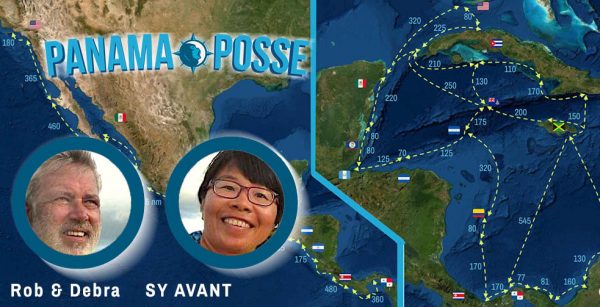
PANAMA POSSE MARINA SPONSORS
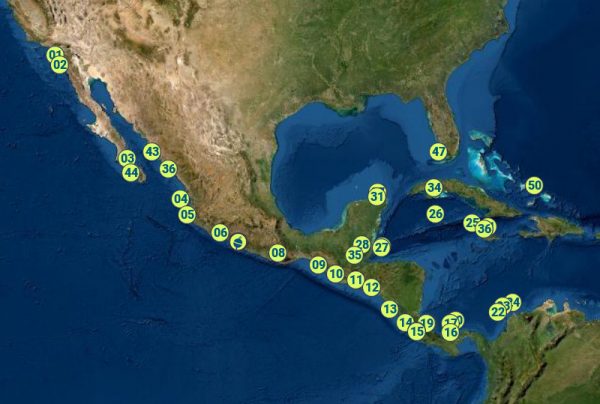














![]()




















![]()









SERVICE PROVIDERS
- ULLMAN SAILS SAN DIEGO
- PREDICT WIND
- SEVENSTAR YACHT TRANSPORT
- CABRALES BOATYARD
- ONESAILS MEXICO
- NAUTICED.ORG
- HOME DEPOT PRO MEXICO
- HERTZ RENTAL CARS MEXICO
- YACHT AGENTS GALAPAGOS
- MARÃTIMA INTEROCEÃNICA COSTA RICA
YACHT AGENTS GALAPAGOS SPONSORS THE PANAMA POSSE
Panama Posse Partners
- Vicente’s Moorings – Acapulco – Mexico
- Discover Tours Chiapas – Mexico
- Park Avenue Villas – San Juan del Sur – Nicaragua
- Coconutz – Annual Papagayo Victory Party – Playa Cocos – Costa Rica
- Abernathy – Chandlery – Panama
- Advertising Partners – Las Vegas
- Safe-Esteem.com – Delaware
Official Panama Posse Ambassadors
- Jaime Figueroa Navarro – Panama
- Bill & Jean – El Salvador Rally, El Salvador
- Ralph Hewitt – Nicaragua
- Suzy & Neil – Distant Drummer – Lesser Antilles
SY TOKETEE at anchor in Golfito, Costa Rica
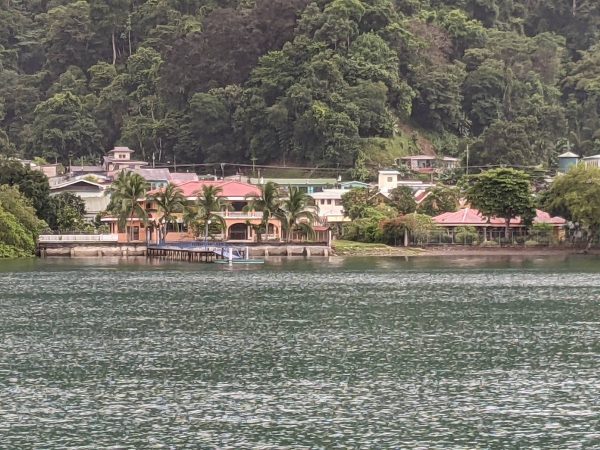
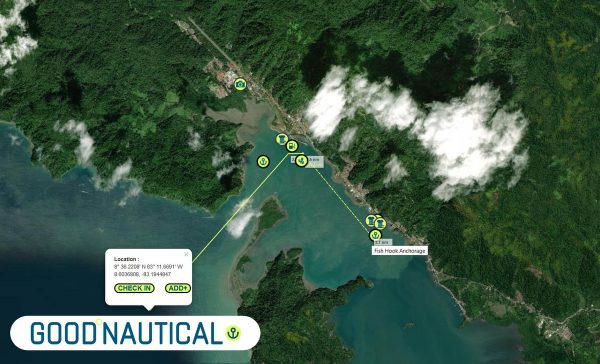
GOLFITO, COSTA RICA is in GOOD NAUTICAL
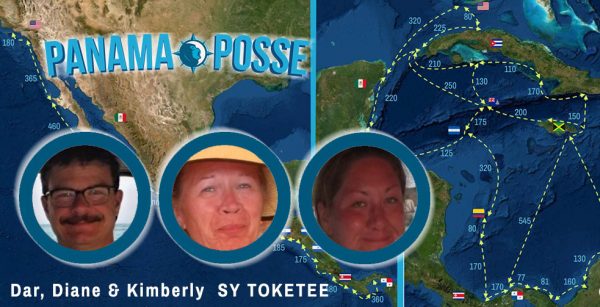
WE OPERATE UNDER INTERNATIONAL MARITIME LAW
YOUR VESSEL YOUR CREW YOUR RESPONSIBILITY

panama posse communications on land @ 9811 w charleston blvd 2262 89117 Las Vegas USA © 2021
Panama Posse / Good Nautical Inc


